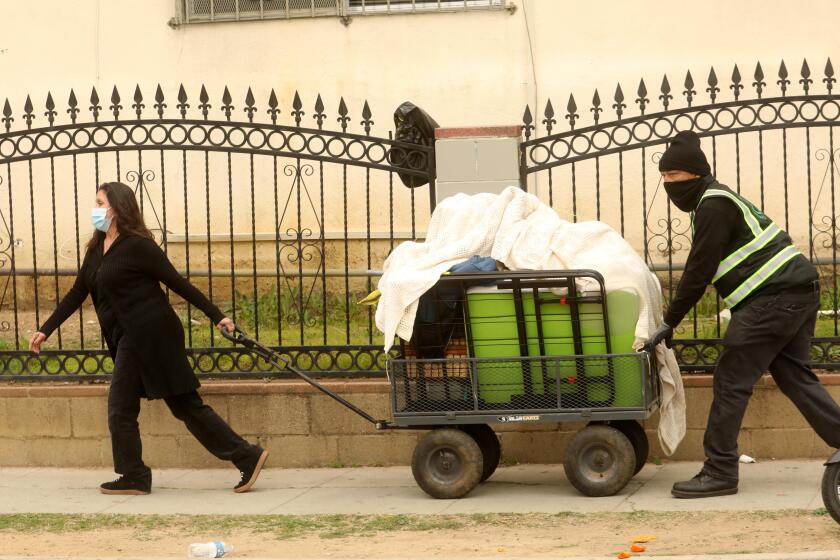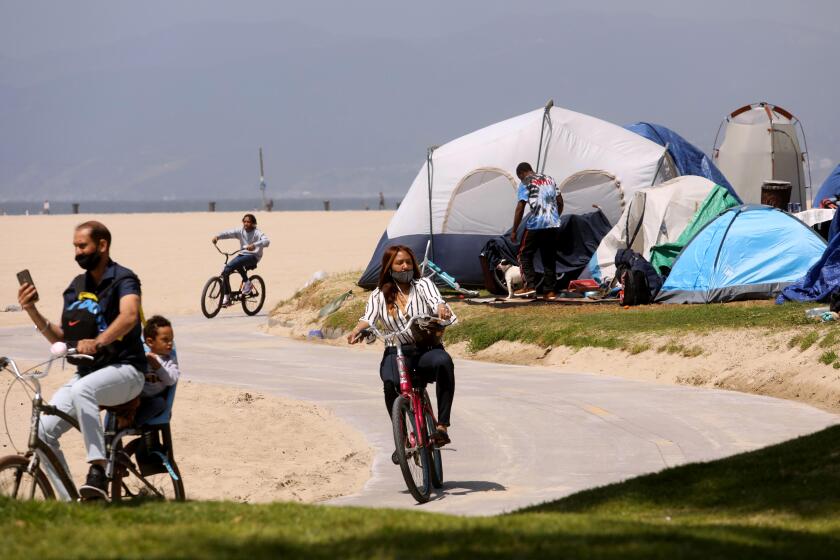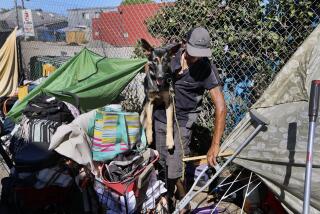
- Share via
Ursula was asleep on a beanbag under an umbrella on a patch of sand, just feet from the public bathrooms on Venice Beach when three LAPD officers shined flashlights on her and told her to move. It was just after 2 a.m. Thursday.
She told them she’d been given a hotel room the day before and had come back for the shopping carts teeming with possessions she left behind. But the effort left her too tired to return to the hotel.
“You’re going to have to get up and exit this area,” one officer said — as sanitation workers stood off to the side, ready to sort her belongings from trash.
“The park is closed.”
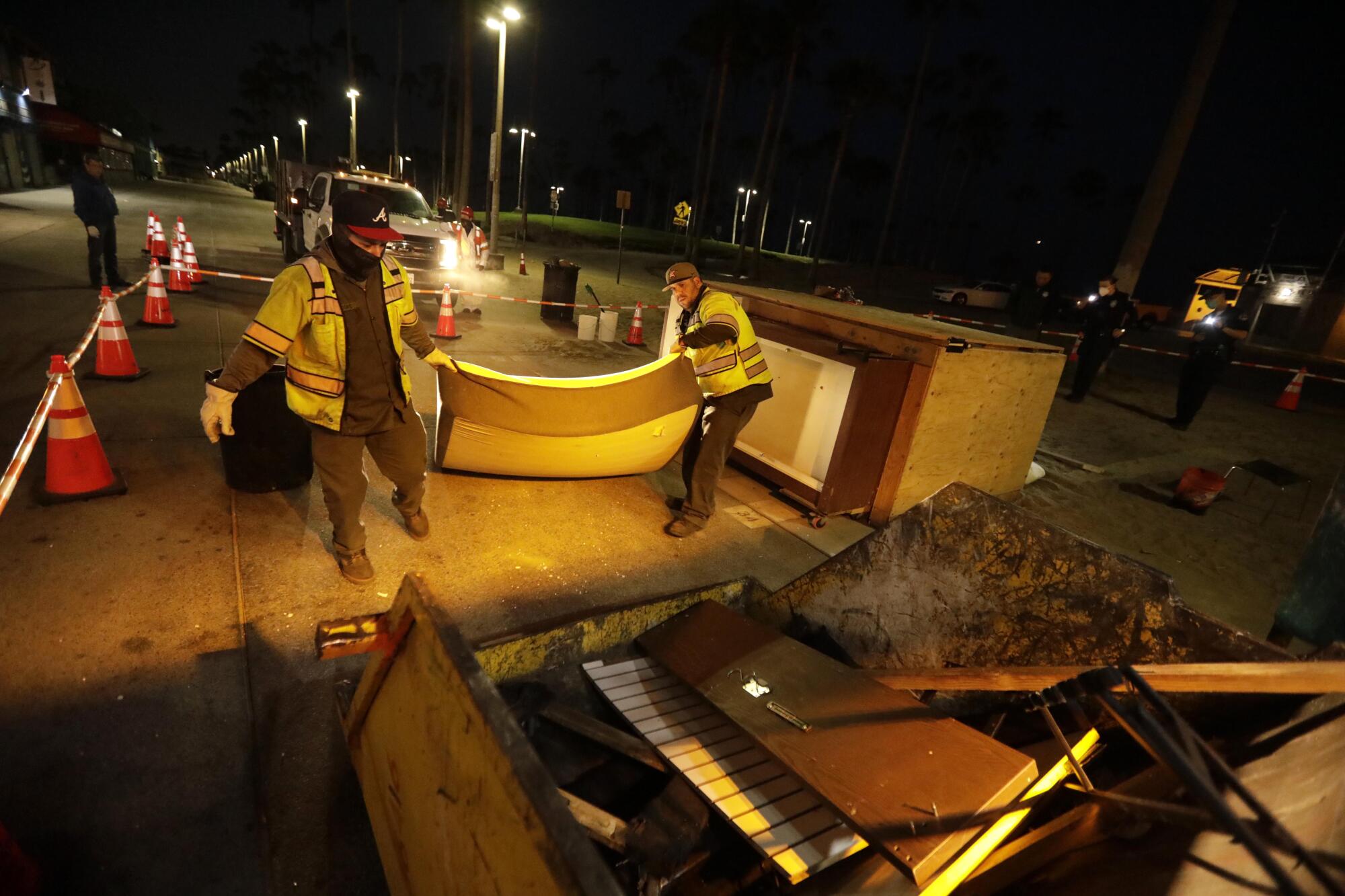
For more than three hours, a crew of about a dozen Los Angeles sanitation and recreation and parks workers accompanied by several officers from the Los Angeles Police Department went to work on Ocean Front Walk, sweeping up detritus from one portion of a homeless encampment that has set Venice on edge for months.
A tarp here, a blanket there. Bottles and cans and other consumer waste. But after all was said and done, after the eastern horizon had begun to glow with the impending dawn, they had moved only two people — Ursula and a man who had been reluctant to leave behind his paintings. The rest had left earlier in the week.
It was a case study in how difficult, and complicated, it can be to move unhoused people when the goal is to avoid the kind of blunt-force dispersal that the city carried out this spring at Echo Park Lake.
The final holdouts at a large homeless camp being dismantled in Echo Park were reportedly arrested Friday morning, apparently ending a yearlong saga.
The crews had come back for a second consecutive morning, mopping up after last week’s deadline to clear the southern portion of the homeless camps from Windward to Park avenues, a stretch of about 650 yards. St. Joseph Center reported that it moved 72 people from the boardwalk to shelter or housing last week. City Councilman Mike Bonin, who represents Venice, said Thursday that about 90 people had been given shelter of some sort.
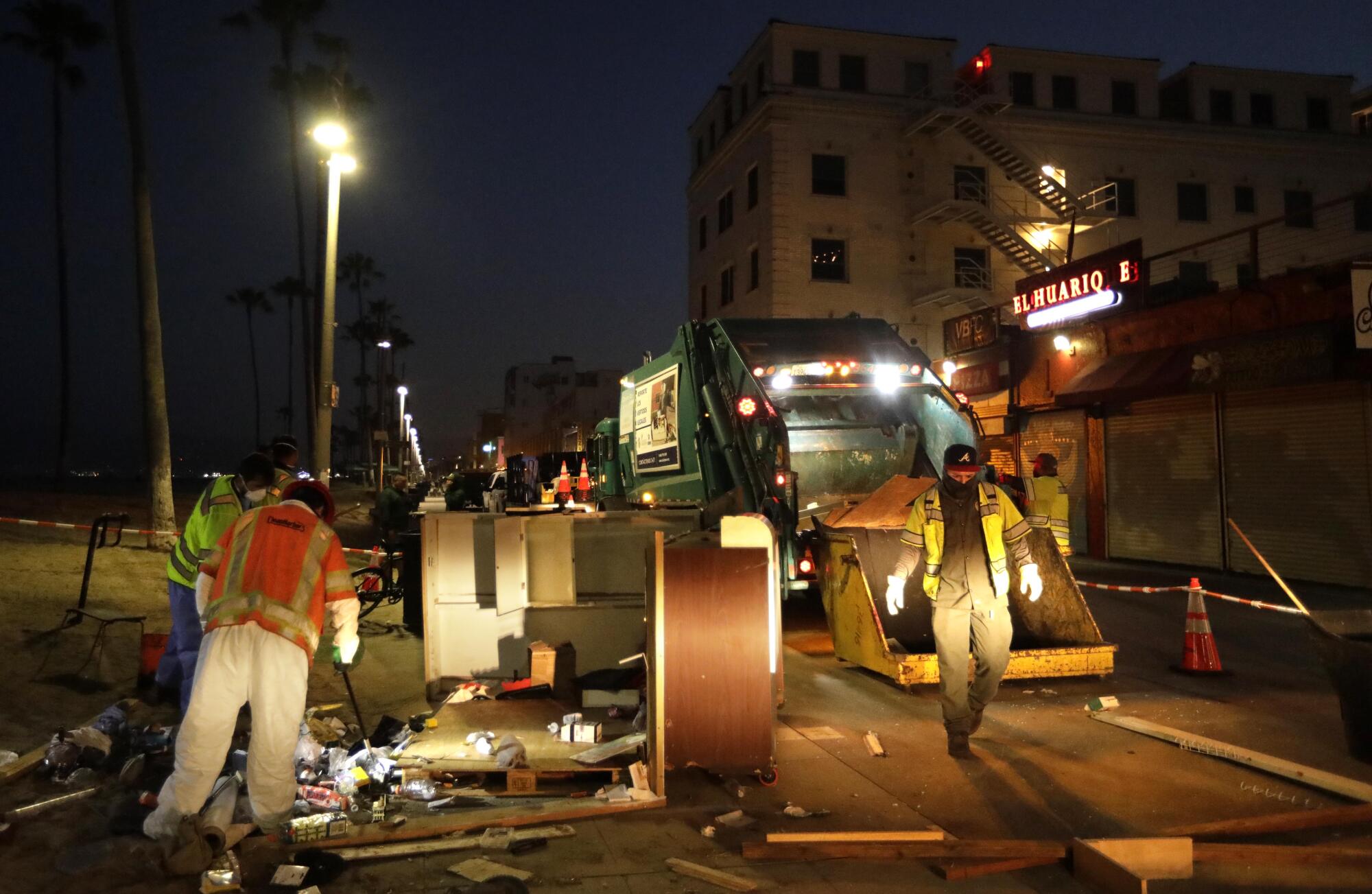
A small cluster of persistent tent dwellers holding out at Park Avenue after Friday’s deadline were removed early Wednesday morning. The target Thursday was anyone remaining.
Officials said the final push was done in the wee hours of the morning to enforce a 2 a.m. curfew on the narrow berm adjacent to the boardwalk, a city park where more than 200 tents had accumulated over the last year. The timing also afforded the cover of darkness for the labor-intensive and politically sensitive moments when the threat of arrest is the last negotiating chip against those who refuse to leave.
After a week of intensive outreach on the Venice Boardwalk, 72 homeless people had moved into interim or permanent housing
“Because the activists won’t be there, the news won’t be there,” said Peggy Lee Kennedy of Venice Justice Committee who monitors cleanup activities. “They’re definitely hiding what they’re doing. It’s really hard for me to be out in the middle of the night, especially after being out there all day.”
Thursday’s mop-up was only a prelude to the far more difficult work ahead as a deadline approached for tents and other structures to be removed from the far north end of the boardwalk between Navy Street and Rose Avenue. Notices were posted this week that all structures would have to be cleared by 7 a.m. Friday.
The Los Angeles Sanitation Bureau conducted what it described as voluntary cleanups Wednesday and Thursday and has scheduled a comprehensive cleanup Friday.
But most of the tents, as well as some semipermanent structures, remained in the northern section. Outreach workers from St. Joseph Center and the Los Angeles Homeless Services Authority were out in force offering shelter to those remaining. But several people living in them told The Times they had no intention of leaving voluntarily.
Thursday’s cleanup was costly in resources but essential to neighborhood groups that pushed for the boardwalk to be cleared for the summer season and are now watching to be sure any cleared area stays that way.
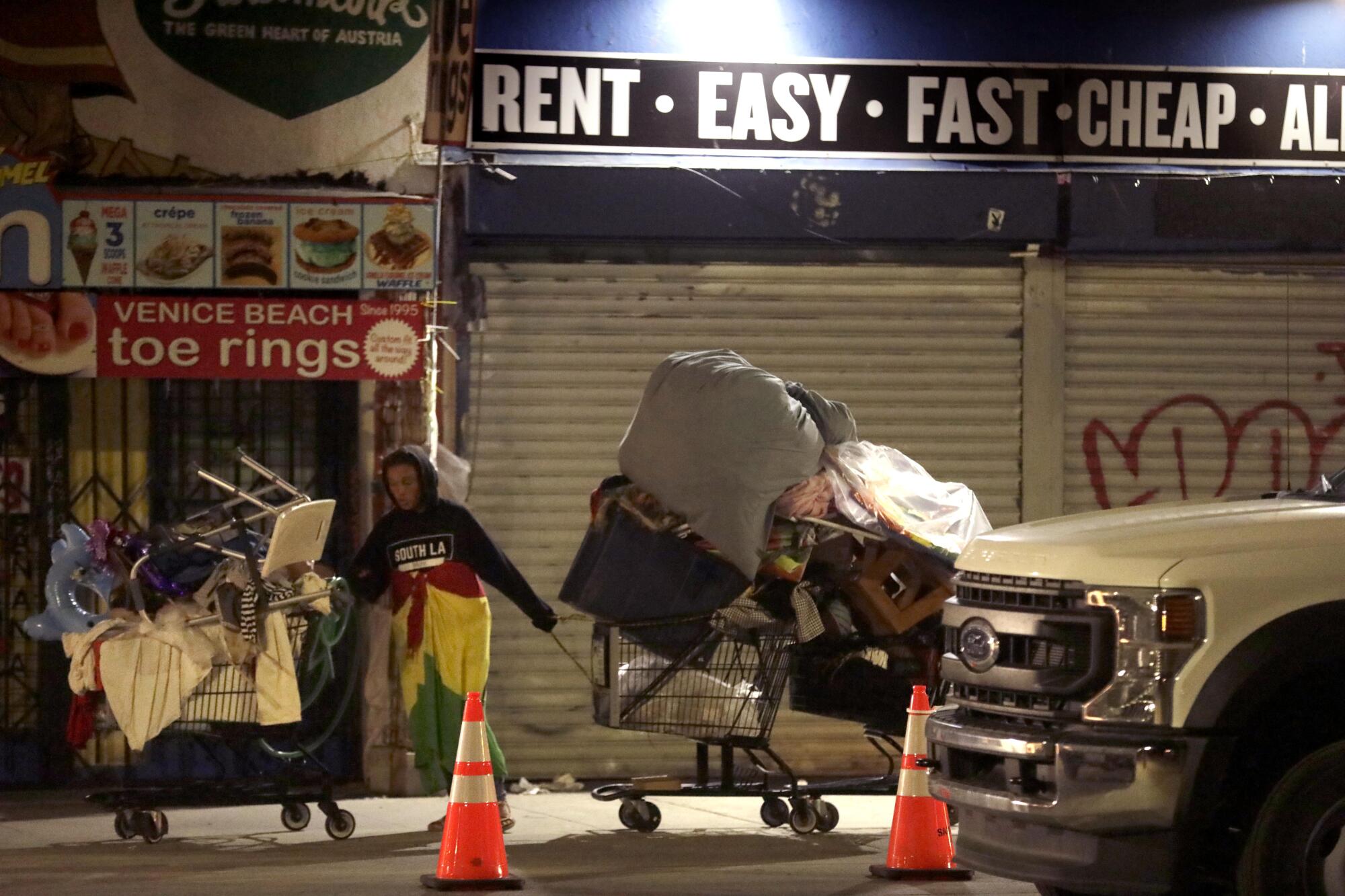
“If you leave a single tent, it is a signal that it is OK to camp here,” said Connie Brooks, a member of Friends of Venice Boardwalk. Brooks said she appreciated the determination to keep the area, which is administered as a city park, usable by everyone.
“The amount of resources shows that there is a commitment to doing this right for everyone,” she said.
On Thursday morning, the two stragglers took up the attention of teams that included St. Joseph Center outreach workers and two senior officials from Mayor Eric Garcetti’s office —Deputy Mayor for City Homelessness Initiatives Jose “Che” Ramirez and Chief of Homeless Operations Brian Buchner, who came to observe and, at times, pitch in.
The mayor’s office, which is co-leading the operation with Bonin, will stay engaged as the phased cleanup moves from zone to zone through the end of the month, mayoral spokesman Alex Comisar said.
After some back and forth and consternation on her part, Ursula, who only gave her first name, pushed a suitcase and her carts, which were lashed together, north on the boardwalk toward an area that hadn’t yet been cleared of tents.
Then the slow, arduous procession of city employees moved several yards north — three pickup trucks, one squad car and a garbage truck in tow.
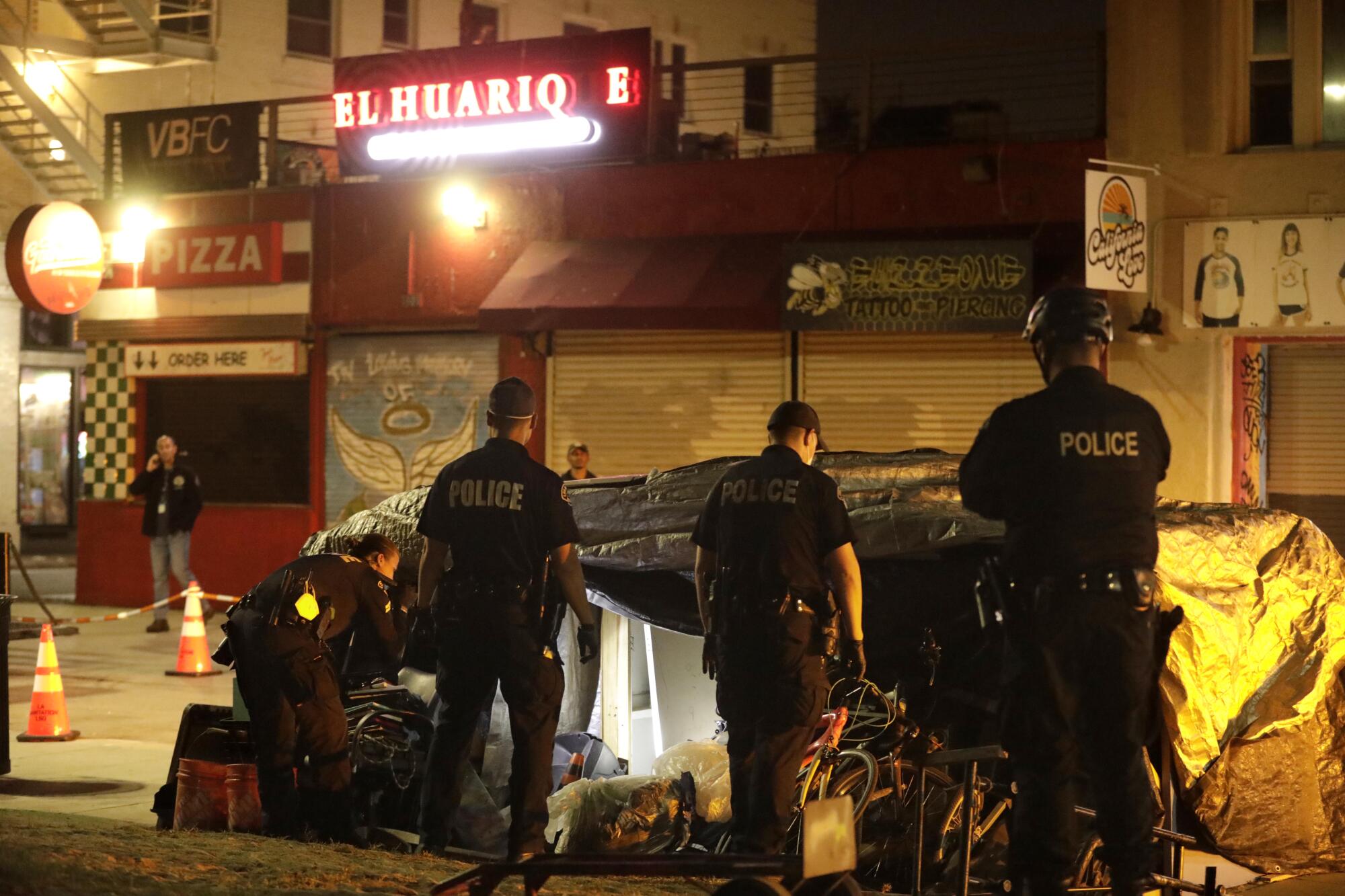
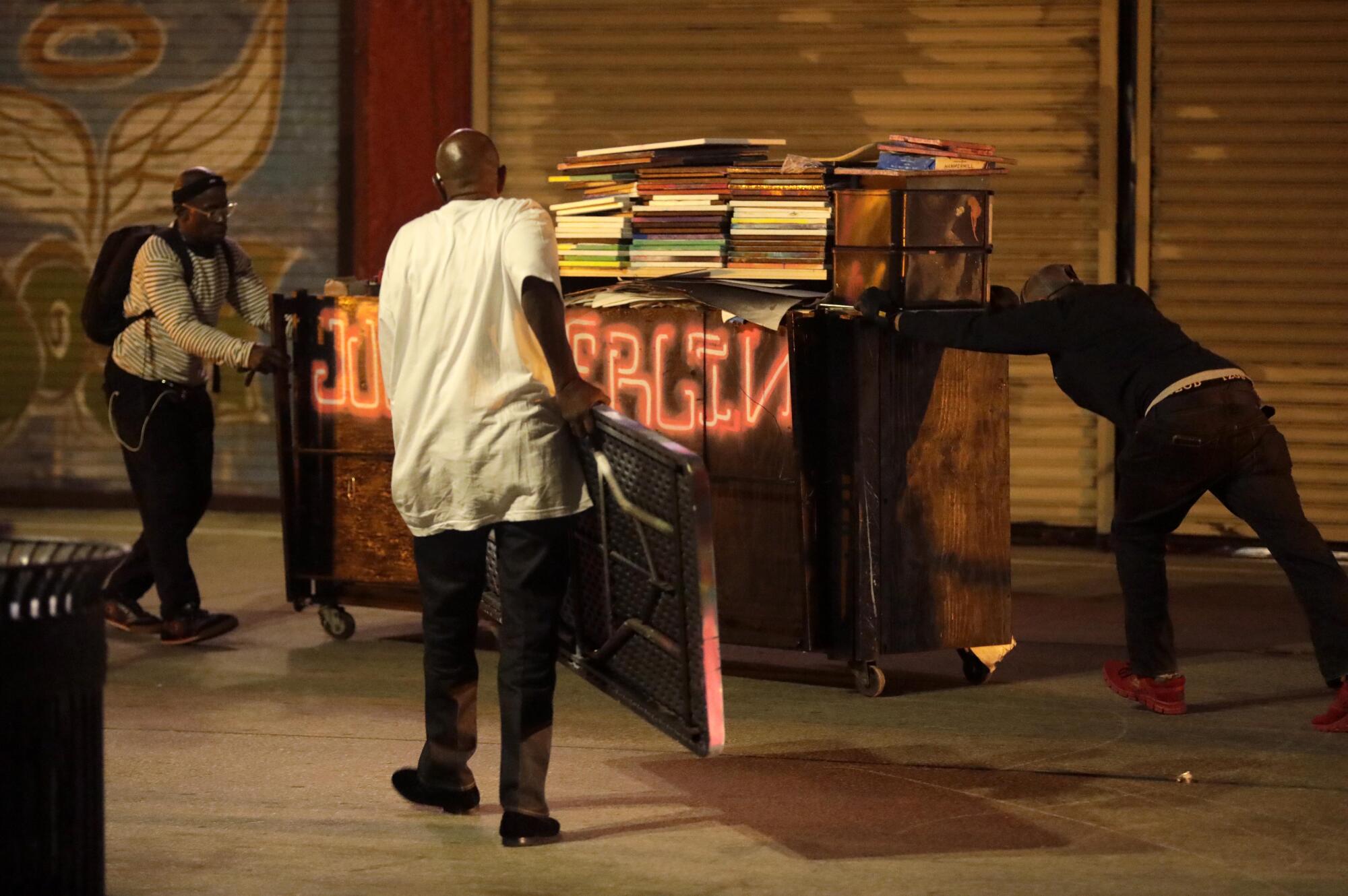
They stopped at about 3:30 a.m. outside a closed Ben & Jerry’s ice cream shop. There, in a small structure covered by a tarp, outreach workers from St. Joseph and police officers woke Jules Navarro and told him he had to move.
The problem for Navarro was that he had dozens of pieces of his art, which he’d been selling on the boardwalk for at least two years. Officers reminded him they’d warned him about this deadline and that the time had come to stop sleeping on the boardwalk.
He refused to come out from his home, which was made from plywood and a large dresser.
If they could just give him until 9 a.m., he said, he would take down the structure and find somewhere to store the paintings.
An outreach worker initially told him that would work but after consulting with sanitation workers, LAPD officers and Garcetti aide Buchner, he came back.
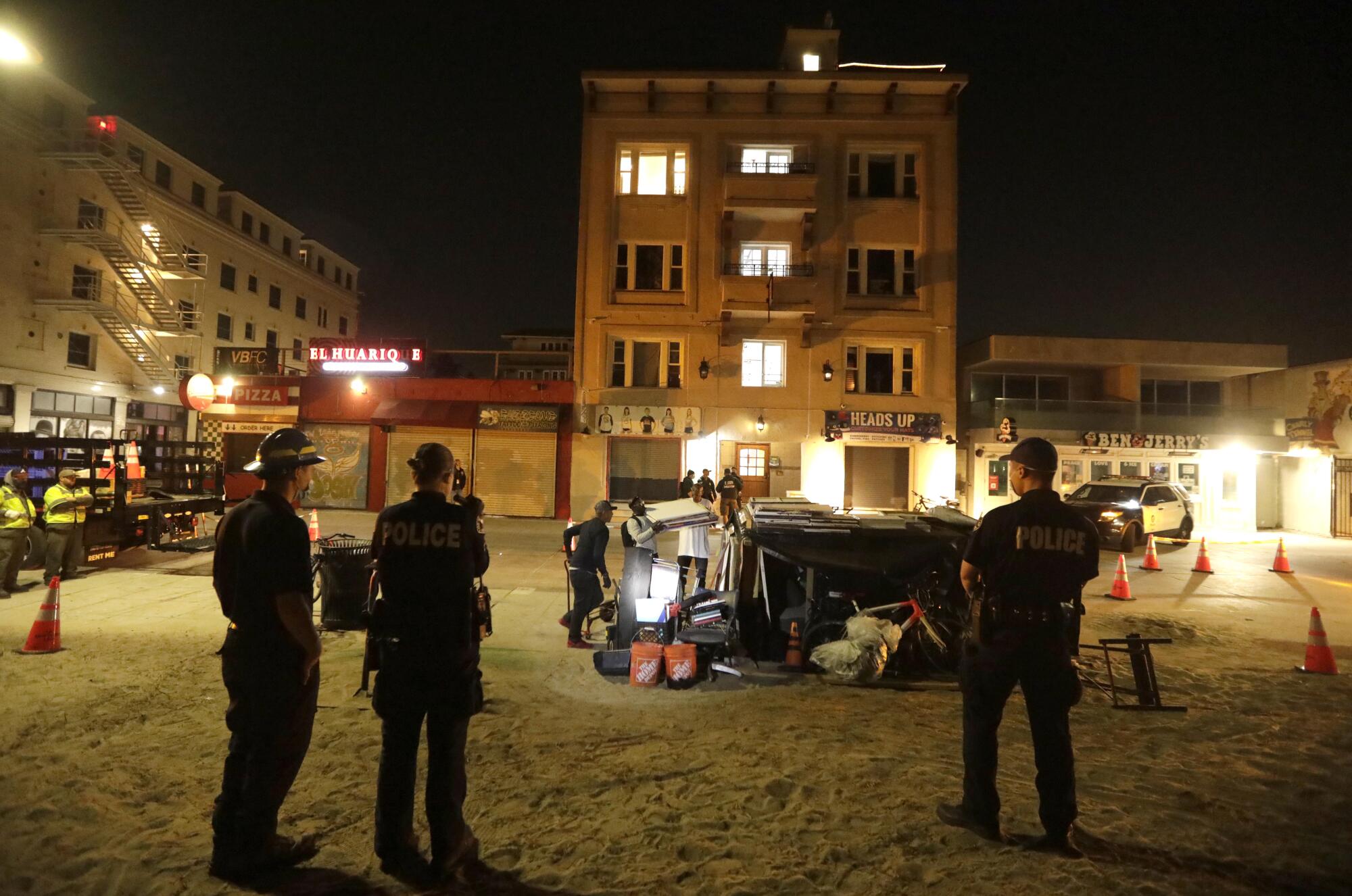
“I’m sorry, Mr. Navarro,” the outreach worker said. “They pulled the rug out from under my feet. You got to leave.”
“In the morning I will go with you all,” he yelled at the outreach workers, “but not at 3:45 a.m.”
“I don’t want your paintings to be taken,” another outreach worker responded.
Navarro had been detained and then released earlier in the week for sleeping on the boardwalk after curfew. After an extensive back and forth with the officers, he came out — frustrated and left wondering why this needed to happen in the middle of the night.
The 38-year-old then grabbed piles of canvases and bags of paint and ferried them across the boardwalk on his skateboard. He leaned the possessions against the wall of a pizza parlor and wondered aloud how he could store his work, which was also his livelihood.
He’d been living out here for just over two years, having moved from Riverside to Venice to ply his trade as an artist. He never made enough to afford rent but was able to get by and stay fed. When the pandemic struck, his income dried up.
He made a few extra dollars sleeping on the boardwalk and guarding street vendors’ possessions overnight. Earlier in the week, he watched city workers haul away those items to a storage facility five miles away and worried his canvases would meet a similar fate.
After an hour of ferrying, his paintings were out of the way and sanitation workers sorted through what was left. The garbage truck groaned as it devoured the plywood that minutes before had been the roof over his head.
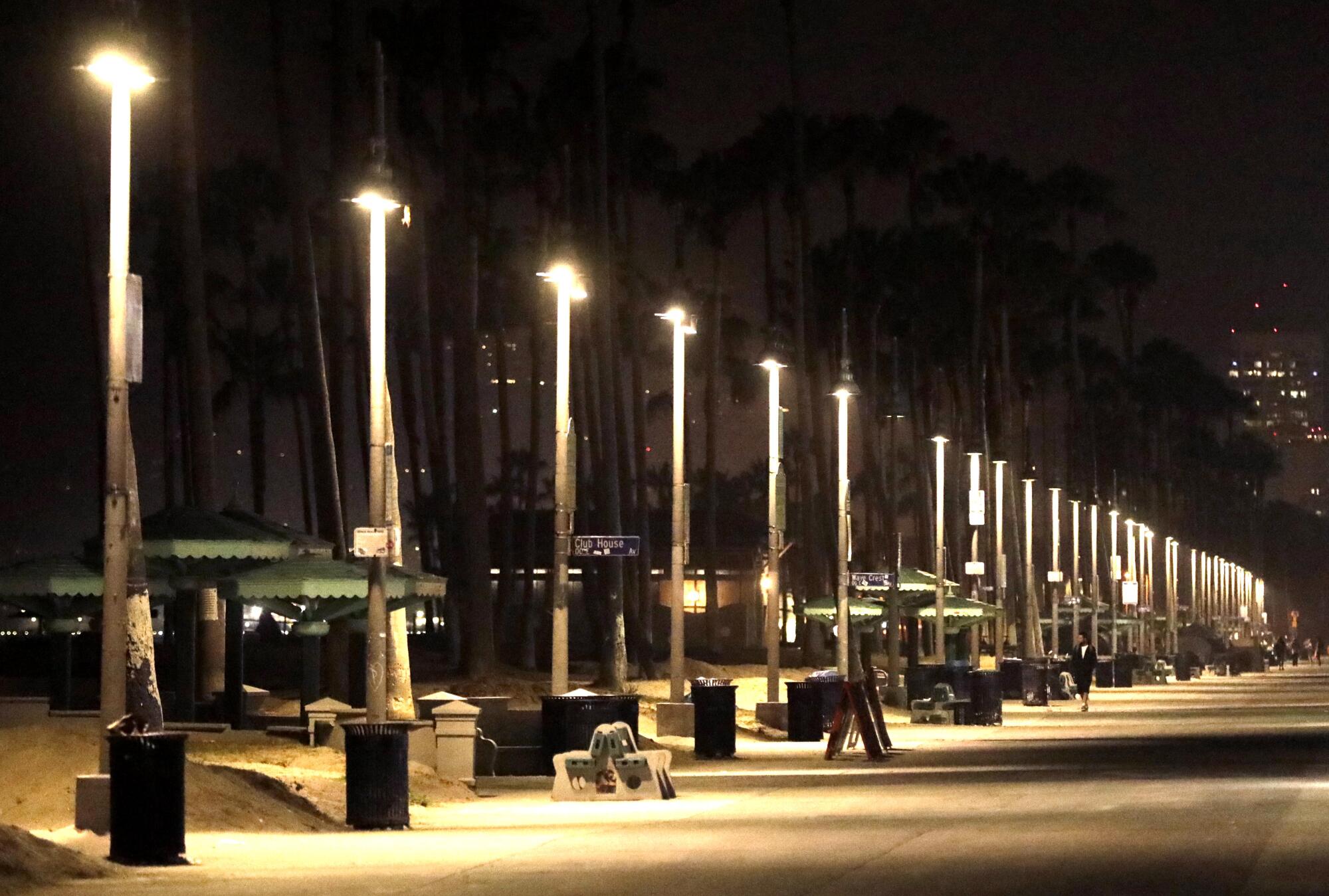
While this dismantlement played out, outreach workers had secured a room for him at a nearby hotel and an Uber ride there.
Ramirez, Garcetti’s homeless deputy, offered to stay behind to look after Navarro’s art while he was gone. Navarro feared that if he left, it would be trashed or stolen.
The Garcetti staffer planned to take Navarro to a nearby Public Storage facility when he returned from checking into the hotel. They didn’t want him to lose his art.
By 5 a.m. the sun was rising, Navarro was on his way and the sanitation workers were packing up. They planned to be back Friday morning to clear another portion of the boardwalk.
About 5:20 a.m., the Uber arrived.
More to Read
Sign up for Essential California
The most important California stories and recommendations in your inbox every morning.
You may occasionally receive promotional content from the Los Angeles Times.
